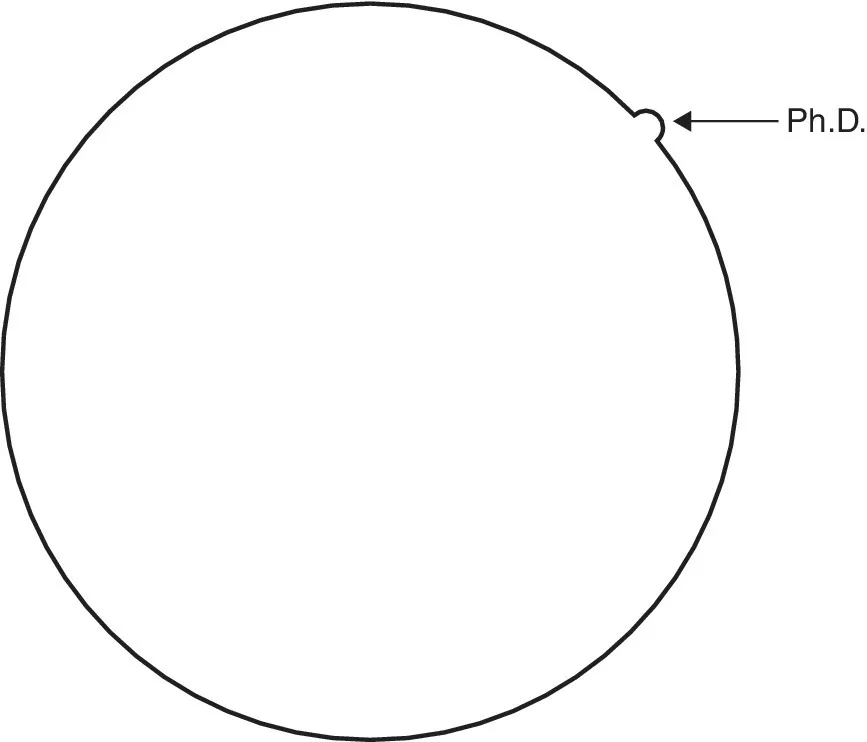
eBook - ePub
How to Complete a PhD in the Medical and Clinical Sciences
This is a test
- English
- ePUB (mobile friendly)
- Available on iOS & Android
eBook - ePub
How to Complete a PhD in the Medical and Clinical Sciences
Book details
Book preview
Table of contents
Citations
About This Book
How to Complete a PhD in the Medical and Clinical Sciences provides fresh insight into the PhD process and a concise framework to aid current and prospective students undertaking research in the medical and clinical sciences.
Filled with useful hints, tips, and practical guidance, the book covers key topics relevant to a PhD researcher such as publishing and presenting, core principles and techniques in medical science, dealing with common pitfalls, and how to write up and move on.
Featuring contributions from authors with experience across the PhD research career spectrum, How to Complete a PhD in the Medical and Clinical Sciences is an invaluable resource for those undertaking their doctoral studies.
Frequently asked questions
At the moment all of our mobile-responsive ePub books are available to download via the app. Most of our PDFs are also available to download and we're working on making the final remaining ones downloadable now. Learn more here.
Both plans give you full access to the library and all of Perlego’s features. The only differences are the price and subscription period: With the annual plan you’ll save around 30% compared to 12 months on the monthly plan.
We are an online textbook subscription service, where you can get access to an entire online library for less than the price of a single book per month. With over 1 million books across 1000+ topics, we’ve got you covered! Learn more here.
Look out for the read-aloud symbol on your next book to see if you can listen to it. The read-aloud tool reads text aloud for you, highlighting the text as it is being read. You can pause it, speed it up and slow it down. Learn more here.
Yes, you can access How to Complete a PhD in the Medical and Clinical Sciences by Ashton Barnett-Vanes, Rachel Allen, Ashton Barnett-Vanes, Rachel Allen in PDF and/or ePUB format, as well as other popular books in Medicine & Medical Theory, Practice & Reference. We have over one million books available in our catalogue for you to explore.
Information
Chapter 1
Introduction
Ashton Barnett‐Vanes1 and Rachel Allen2
1 MB‐PhD Candidate, St George’s, University of London and Imperial College London, UK
2 Reader in Immunology of Infection and Head of Graduate School, St George’s, University of London, UK
A PhD
Well done on picking up (and ideally purchasing!) this book. If you’re considering or about to embark on a PhD in the clinical and medical sciences, or related life/natural science disciplines, this might be one of the last scientific books you purchase. That’s not because it’s so good as to end all others, or that it’s so outrageously bad you go off books altogether; but because PhDs are about new knowledge, books are about old knowledge – with new diagrams. That said, why is this book worth reading? Well, before we get to that, it’s worth first laying out the PhD landscape that awaits you.
A large amount of UK research is publicly funded. You know the drill – law abiding citizens work and pay taxes, which are then distributed around our economy. Now, as well as subsidising first class seats on empty trains, some of this money goes into big productive industries, including science. Medical research charities are another major source of science funding, along with the pharmaceutical industry and related enterprises. In the UK, about 1.5% of GDP is invested in research and development(1); the two largest of these funders of scientific/medical research – the Medical Research Council and the Wellcome Trust – collectively spend just over £1 billion per year. That’s a lot of money, enough to buy 167 000 hip replacements, 22 000 teachers or four (Challenger) battle tanks(2). This money filters down a scientific waterfall and finds its way into universities, research institutes, laboratory groups, and occasionally PhD student bar tabs – sorry, projects. At any one time, there are around 30 000 PhD students in: medicine and dentistry, subjects allied to medicine, biological sciences and veterinary science(3); which to give you a sense of scale is about the same population as Gibraltar…
To wrap this up, it’s worth knowing that each PhD student is quite an investment. A three‐year stipend will reach around £45 000; a consumables budget could easily reach £30 000, not to mention those tuition fees. In short, each PhD student costs around £100 000, that’s £2.7 Billion of coinage going into one cohort of PhD students, lots of which comes from the public and charitable sectors; moreover, this cost can be significantly higher when considering clinical trainees undertaking a PhD. There’s also the time invested in the enterprise by your supervisors, and their equivalent salary costs. While 3 or 4 years sounds like a long time (and it kind of is!), this is comparatively short compared to other countries. For example, PhDs in the United States can sometimes double that duration. So, if we’re going to keep ‘our’ PhDs comparatively shorter, safeguard their international prestige, ensure they’re value for money – and actually have a good chance of discovering something; it’s vital that projects are conducted efficiently and effectively from the get go. That’s where this book comes in.
Perspective
Research is exciting. The focus and expertise you can acquire on a specific area is quite incredible, at times even alarming. On this relatively solitary journey, it’s easy to feel you’re in the know, and everyone else isn’t, but keep perspective. Check the illustrations below for what we’re getting at, courtesy of Matt Might(4).
Imagine this circle represents the boundaries of human knowledge, everything we know is contained within it.

Figure 1.1
Courtesy of Dr Matt Might
The circles represent different levels of human knowledge, the inner circle is what we learn in primary school, they expand into secondary school and begin to reach out as Bachelors, Masters and eventually PhDs – the latter furrowing at the edges of human understanding.

Figure 1.2
Here’s what your PhD looks like to you, as you push against the wall of current knowledge.

Figure 1.3
Eventually you’ll make your mark, and push that boundary forwards – expanding human knowledge.

Figure 1.4
Here’s how it looks to you up close as the researcher.

Figure 1.5
But remember, this is how it looks to everyone else.

Figure 1.6
Why a book? How to use it
There are ample books to help students get through their undergraduate studies; get a ‘First’ or write a good Master’s thesis and so on. But oddly, when it comes to the highest degree on offer in the UK, books offering guidance on PhDs are all too often generic, with some even as long as a doctoral thesis! Of course, you should receive a student handbook from your university, but these are seldom an inspiring read or source of friendly advice. This book addresses these shortcomings three‐fold. First, it’s aimed at a much narrower audience, focusing on medical and clinical science PhDs, and related biomedical and life‐science disciplines. Second, it is direct and concise; PhD students can often be overwhelmed by the amount of literature reading they need to do, a guide book should be there to support not supplant. Third, this book combines the perspectives of current or recent PhD graduates with those of senior researchers, from both scientific and clinical backgrounds. We hope that this will give you an insight into academic’s expectations, while avoiding the potential for a ‘how it was in my day’ bias.
While you’re welco...
Table of contents
- Cover
- Title Page
- Table of Contents
- List of contributors
- About the editors
- Foreword
- Preface
- Acknowledgements
- Chapter 1: Introduction
- Chapter 2: Deciding on and finding a PhD
- Chapter 3: Anatomy of a PhD
- Chapter 4: Core techniques, principles and statistics
- Chapter 5: Take off
- Chapter 6: Dealing with problems
- Chapter 7: Breaking ground
- Chapter 8: Presenting and publishing as a PhD student
- Chapter 9: Landing and writing up
- Chapter 10: The viva and moving on
- Chapter 11: PhDs in veterinary science and medicine
- Chapter 12: International perspectives on medical and clinical science PhDs
- Chapter 13: What I’m really thinking: The post‐doc
- Chapter 14: What I’m really thinking: The Professor
- Index
- End User License Agreement